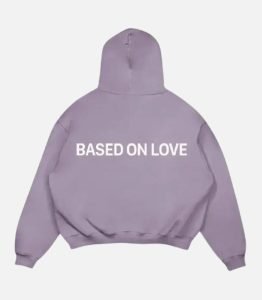The term “Hellstar” conjures snap shots of celestial chaos—fiery skies and cosmic defiance. Its roots stem from mythology and rise up, fusing historical lore with present day avenue lifestyle. Many interpret it as a symbol of energy, rage, and ascension through turmoil. Over time, it has transcended metaphor to end up a label of creative disruption. Whether mythic or cutting-edge, Hellstar implies a force that defies containment or way of life.
Evolution Into Streetwear Culture
Hellstar didn’t continue to be in mythos—it surged into fashion with volcanic depth. What started out as a symbolic motif found bodily form in restrained-edition streetwear drops https://us-hellstars.com. The aesthetic—darkish, cryptic, cosmic—reflected youngsters’ angst and artistic revolt. Its layout DNA consists of starscapes, flames, skeletons, and gothic typography. Fans quickly followed it no longer only for its visuals but the announcement it made. Wearing Hellstar supposedly embodies individuality and resisting the fame quo.
Symbolism In Every Stitch
Hellstar apparel isn’t stitched for application; it’s sculpted with aim and lore. The logo infuses every garment with symbols—solar eclipses, burning stars, and shattered halos. These motifs hint at collapse and rebirth, a nod to the phoenix-like essence of its wearers. Colors are hardly ever unintended—deep blacks, ember reds, and cosmic purples dominate. Each palette whispers a tale of dusk, conflict, and inner awakening. More than garments, Hellstar garments are wearable poetry.
Influence On Music Trends
Artists, especially in hip-hop and alt-rock, gravitate in the direction of Hellstar like moths to flame. It aligns with the uncooked emotion and aesthetic of underground music movements. You’ll frequently spot growing rappers and moody vocalists wearing Hellstar on tour or in films. The brand has emerged as an unofficial uniform for lyrical outlaws and soundwave pioneers. Music and fashion, while intertwined, extend each other—and Hellstar prospers in that fusion. It’s no longer heritage styling; it’s a visible soundtrack.
Cultural Roots And Identity
At its middle, Hellstar speaks to cultural displacement, rise up, and identity reclamation. It resonates with folks that feel unmoored from mainstream illustration. The logo taps into the chaos of cutting-edge teens—struggles with intellectual fitness, belonging, and expression. For many, Hellstar isn’t only an appearance—it’s armor, a flag of resistance. Its narratives replicate marginalized voices regularly disregarding style’s smooth highlights. By embracing darkness, it lets in wearers to locate their very own sort of mild.
Design Language And Aesthetic
Hellstar’s visible language is each cryptic and cinematic, drawing from surrealist and gothic cues. Its iconography feels torn from a dream—half nightmare, 1/2 revelation. Expect asymmetrical cuts, distressed textures, and chaotic overlays that ruin design conventions. Typography dances between medieval calligraphy and digital glitch—beyond and destiny colliding. Every piece feels like an artifact from an exchange timeline, wherein fashion survived an apocalypse. It’s a brand that speaks in riddles, and wearers come to be the interpreters.
The Rise Of Limited Drops
Scarcity drives desire, and Hellstar is aware of this strategy with surgical precision. Rather than mass-producing gadgets, they drop curated capsules—fast, unpredictable, and enormously coveted. These releases become events, fueling social media frenzies and midnight queues. The exclusivity fosters community—a tribe bonded by means of their hunt for warmth. Hellstar’s rarity adds mystique, making every piece greater than apparel—it becomes a relic. In a world of overexposure, this elusiveness feels refreshing and planned.
Collaborations That Redefined Cool
Hellstar’s allure has attracted collaborations with style-defying creatives and underground icons. These partnerships aren’t superficial—they’re co-authored visions constructed on a shared ethos. Whether operating with avant-garde designers or punk-rap collectives, the end result is continually explosive. These collabs merge aesthetics and philosophy, developing confined portions that experience ritualism. They extend the Hellstar universe without diluting its soul. Each drop is a cultural ripple, pushing limitations at the same time as honoring the logo’s apocalyptic core.
Subculture And Social Media
Hellstar’s cult reputation didn’t grow in silence—it erupted on-line, where visible storytelling reigns preferrred. Instagram, TikTok, and style boards have become breeding grounds for Hellstar mythology. Youth posted moody shoots in alleyways, deserts, and neon-lit rooms, turning clothes into cinematic moments. These posts weren’t just flexes—they were declarations of alignment with the emblem’s ethos. Hashtags have become digital altars, and algorithms carried the gospel of Hellstar worldwide. The net didn’t just sell the logo—it helped shape its mythology.
Future Of The Hellstar
What lies in advance for a brand born from fantasy and hearth? The route forward feels each nebulous and electric. With AI, digital style, and digital influencers, Hellstar could go beyond physical textiles. Expect NFTs, augmented fact drops, and meta-global pop-ups. But even because it evolves, its essence—chaos, defiance, self-expression—will remain untamed. It will hold to mirror the inner battles of a technology. Whatever shape it takes, the Hellstar received’t fade—it will burn brighter inside the dark.
















Leave a Reply